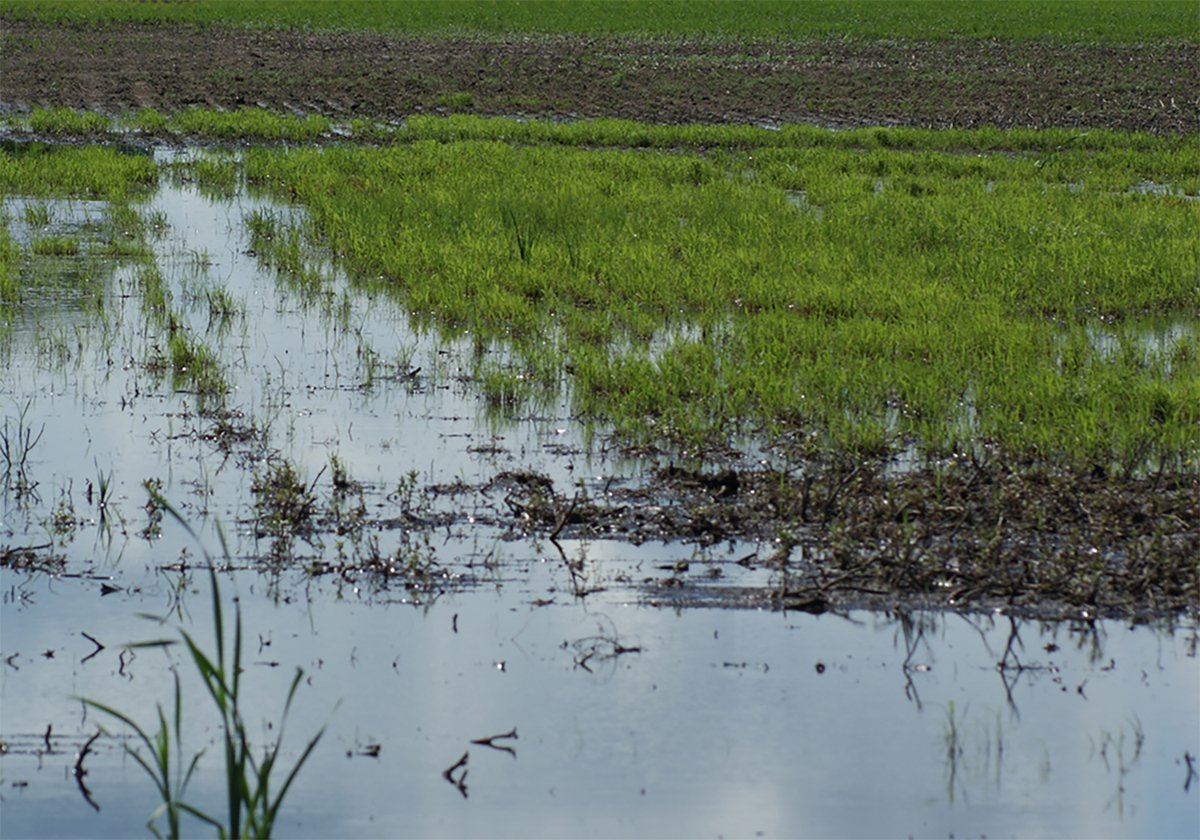Yesterday three new ag entities were jolted into life, brought into our world by the mad scientists at the ICE Futures Canada exchange.
Monday the exchange gave birth to its spring wheat, durum and barley contracts, an act of refined engineering, high hopes and years of investment worthy of the greatest marketing innovators, or scientific inventors, of our age.
Read Also

Topsy-turvy precipitation this year challenges crop predictions
Rainfall can vary dramatically over a short distance. Precipitation maps can’t catch all the deviations, but they do provide a broad perspective.
At the same time, a different prairie ag entity, injured and partially dismembered, forged onwards, hoping to find a way to survive.
The Canadian Wheat Board, grievously wounded by the brutal amputation of its monopoly marketing powers, has not thrown in the towel – although many arch-monopolists have backed away – but instead has decided to survive this time of turmoil and prove it can still have a purpose. At meetings across the prairies, senior board staff are encouraging farmers to give the new board a chance.
This is a time of turmoil, opportunity, uncertainty, fear, hope, excitement and despair like none that I have seen in the grain trade before, with each part of the exceedingly complex system trying to adapt to a system that is forming and evolving piecemeal. Every player knows how they want the system to turn out, but every one also knows they have to be able to fit themselves in with the system that evolves – whether or not it’s one they like.
It’s like the early days of the personal computer industry, where you had to decide whether to go with a Macintosh or an IBM-friendly machine, or the days of VHS versus Betamax. Everyone’s trying to figure out what kind of a system they’re going to have to be compatible with.
At Manitoba Ag Days last week it was clear to me from speaking with dozens of farmers that they’re very much up in the air about what kind of system their grain will be marketed within, and I suspect that’s the feeling amongst many marketing and grain companies too. So much is yet to be defined. So it’s a bit Wild-Westy out there right now.
But it’s heartening to see two ancient and hallowed Winnipeg institutions working aggressively to keep themselves central in the new system that evolves. Farmers will be much better off if both the commodity exchange and the wheat board are successful. Methinks the elder institution has to move faster and more aggressively, whilst the comparative youngster can afford to be slower and more deliberative.
For the board, which is the younger institution by decades, there are probably weeks and months to play with before it has to have solidified all its offerings. As much as there is a lot of clamour about farmers wanting firm-priced grain contracts available NOW, what I got from talking to lots of serious farmers at Manitoba Ag Days was that many farmers are apprehensive about signing any grain sales contracts with grain companies before they know the grade and protein levels of the wheat, durum and barley they produce, and don’t want to commit too much before they can see what the discounts for under-spec crops will be. This is not a problem that hits canola and other crops as severely, but with cereals the spectrum is wide. So lots and lots of farmers aren’t going to want to contract much until well into the growing season, or after. And grain companies can’t be expected to provide firm schedules of premiums and discounts until they know what they’ve got coming, and what they can make sales for. And that won’t be for a while. So the new CWB has time to get things straightened out and done right, which is exactly what Gord Flaten of the board said at the CWB breakfast at Ag Days.
For the ICE exchange in Winnipeg, it’s got to work quickly to keep the contracts alive. Contracts have a terrible tendency to die at birth, or to fade quickly after initial halfhearted attempts at crawling, and the new contracts need active trading and liquidity to work. Will they get it? Who knows? Everyone’s probably waiting for six others to start trading them first. But the stakes for farmers are large. If farmers want the confusion over wheat, durum and barley prices on the prairies to be cleared away, having publicly posted prices for the main reference grades will begin to set some foundation for three huge prairie crops. Even if futures aren’t used on either side of farmer-grain company sales, the existence of futures prices specific to Canadian crops will provide some peg to base contracts against. Without these futures-based prices, three giant prairie crops will end up living like special crops, which seems absurd. (Just being absurd doesn’t mean it can’t happen. (Just think of Newt Gingrich actually having a shot at the U.S. Republican presidential nomination. That’s like something out of Monty Python.)
For the new CWB to work, it’s got to convince farmers that it can actually provide a valuable service and give them something the local elevators by themselves can’t. That might not be as tough a job as it sounds. Farmers have been steadily engaging professional marketing advisors for years to help them with sales, pricing and hedging decisions, but I’d be confident to say many and probably most farmers have never done so. With the CWB giving pooled prices, the main grain portion of a farm’s income was hedged in the past, at least to a degree, so farmers could get away with leaving their other crops unpriced – sometimes. But now everything is living in a free market, thousands more farmers might decide to employ advisors, and many might feel most comfortable using the CWB Farm Business Representatives they’ve had on staff for years. These people have years of relationships with farmers. Why wouldn’t lots of farmers go to them? They might find they have a lot more farmer-clients than they expect six months from now.
So it’s exciting to see these two organizations evolving and re-engineering themselves for the new world. I hope to see them standing – alive, proud and defiant – a year from now.
But for both institutions it will be a challenging situation, a perilous road – one which could end badly and leave us all worse off.
(A note on the fabulous art contained above:
To see the great graffiti version of Frankenstein’s monster, go to: http://upload.wikimedia.org/wikipedia/commons/8/8b/Vitoria_-_Graffiti_%26_Murals_0692.JPG
To see Lady Butler’s Remnants of an Army (from the first Anglo-Afghan war) go to: http://en.wikipedia.org/wiki/File:Remnants_of_an_army2.jpg
To see the rather athletic and unsewnup Frankie Monster, go to: http://commons.wikimedia.org/wiki/File:Frankenstein_Cooke_1823.jpg
For the Last Stand of the 44th Regiment at Gundamuck (another Afghan heroic tragedy) go to: http://commons.wikimedia.org/wiki/File:Last-stand.jpg



















